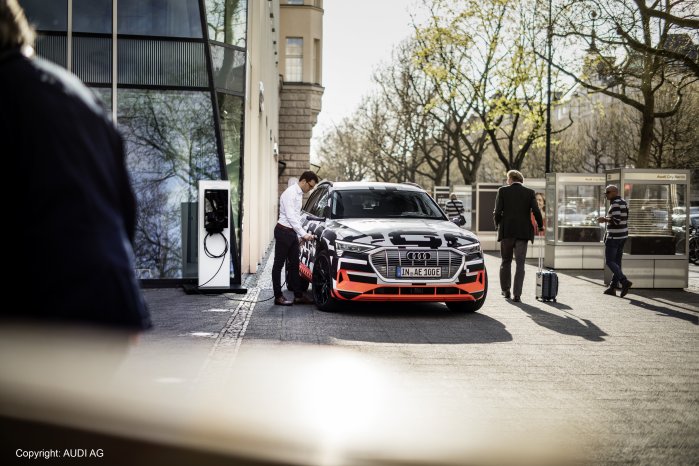“E-mobility is becoming an important pillar in the energy supply of the future. In light of this, the integration of e-mobility into home energy management has a high priority because a large part of the charging process typically takes place at home. To make charging as easy and efficient as possible, Audi and SMA are pooling their expertise in the areas of e-mobility and energy management to develop an integrated solution,” said Dr. Jürgen Reinert, member of the SMA Managing Board for Operations and Technology.
“Our standard for premium quality is that electric cars fit seamlessly into intelligently networked homes and thus offer real added value to customers. That’s why we are working with the two leading home energy providers, SMA Solar Technology and the Hager Group. This makes charging really convenient,” said Fermin Soneira, Head of Product Marketing at Audi.
Cost and CO2-optimized charging
With the “connect” charging system and an appropriately equipped HEMS, customers can use variable electricity tariffs for charging the Audi e-tron. This means that the battery can be loaded with electricity at low-cost times while taking into account personal mobility needs, such as departure time or charging level. The “connect” charging system receives the necessary power tariff data either from the HEMS or from individually stored customer information in the myAudi portal. If the house has a PV system, it is possible for the customer to optimize the charging process in such a way that the Audi e-tron can give priority to its self-generated electricity for charging. For this, the electric SUV takes into account forecast sunshine phases provided by the HEMS and the flow of current from the house connection.
Protection against power outages
The customer also benefits from power outage protection from the intelligent charging functions. The customer can always use the maximum available power that the house connection and the car allow for charging. The charging system takes into account the needs of other appliances and thus avoids overloading the utilities connection and triggering the main fuse. Customers can view their individual charging statistics and the charging process in the myAudi portal and on the myAudi app. The relevant costs are also presented in detail in addition to the charging times and the amount of electricity used. The data is stored on a protected server and can be evaluated and exported in the portal. The solution will be available from the first quarter of 2019.


